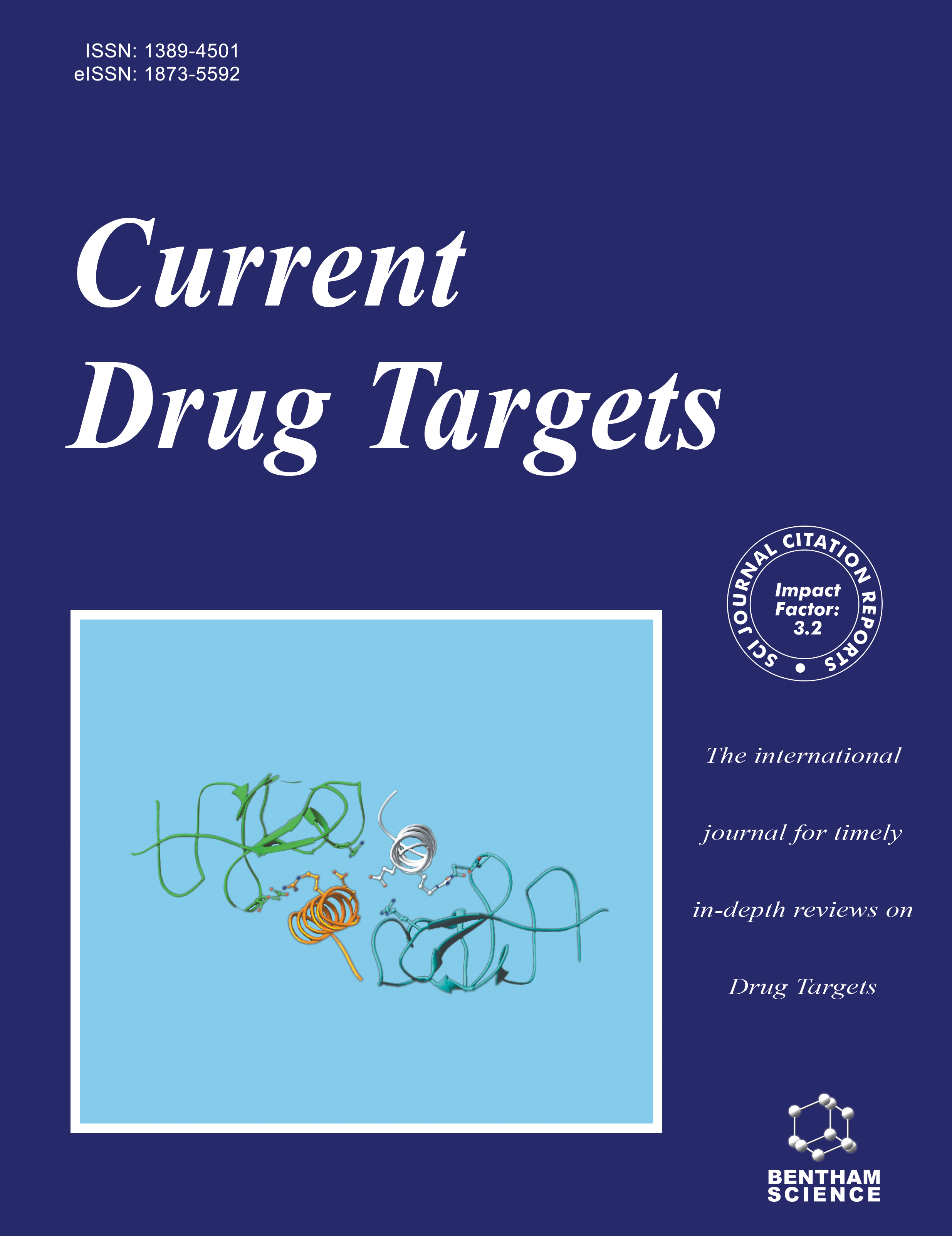- Home
- A-Z Publications
- Current Drug Targets
- Previous Issues
- Volume 21, Issue 5, 2020
Current Drug Targets - Volume 21, Issue 5, 2020
Volume 21, Issue 5, 2020
-
-
The Use of Chemical Compounds to Identify the Regulatory Mechanisms of Vertebrate Circadian Clocks
More LessAuthors: Yoshimi Okamoto-Uchida, Akari Nishimura, Junko Izawa, Atsuhiko Hattori, Nobuo Suzuki and Jun HirayamaCircadian clocks are intrinsic, time-tracking processes that confer a survival advantage on an organism. Under natural conditions, they follow approximately a 24-h day, modulated by environmental time cues, such as light, to maximize an organism’s physiological efficiency. The exact timing of this rhythm is established by cell-autonomous oscillators called cellular clocks, which are controlled by transcription–translation Read More
-
-
-
Navigating Alzheimer’s Disease via Chronic Stress: The Role of Glucocorticoids
More LessAuthors: Vivek K. Sharma and Thakur Gurjeet SinghAlzheimer’s disease (AD) is a chronic intensifying incurable progressive disease leading to neurological deterioration manifested as impairment of memory and executive brain functioning affecting the physical ability like intellectual brilliance, common sense in patients. The recent therapeutic approach in Alzheimer's disease is only the symptomatic relief further emerging the need for therapeutic strategies to be targeted in m Read More
-
-
-
An Overview of Prospective Drugs for Type 1 and Type 2 Diabetes
More LessAuthors: Ping Wu, Zhenyu Liu, Xiaohong Jiang and Hao FangAims: The aim of this study is to provide an overview of several emerging anti-diabetic molecules. Background: Diabetes is a complex metabolic disorder involving the dysregulation of glucose homeostasis at various levels. Insulin, which is produced by β-pancreatic cells, is a chief regulator of glucose metabolism, regulating its consumption within cells, which leads to energy generation or storage as glycogen. Abnormally low in Read More
-
-
-
Plant Polyphenols as Neuroprotective Agents in Parkinson’s Disease Targeting Oxidative Stress
More LessAuthors: Suet L. Hor, Seong Lin Teoh and Wei Ling LimParkinson's disease (PD) is the second most prevalent progressive neurodegenerative disorder characterized by the degeneration of dopaminergic neurons in the human midbrain. Various ongoing research studies are competing to understand the pathology of PD and elucidate the mechanisms underlying neurodegeneration. Current pharmacological treatments primarily focused on improving dopamine metabolism in PD patient Read More
-
-
-
The Role of Reactive Oxygen Species in Tumor Treatment and its Impact on Bone Marrow Hematopoiesis
More LessAuthors: Yongfeng Chen, Xingjing Luo, Zhenyou Zou and Yong LiangReactive oxygen species (ROS), an important molecule inducing oxidative stress in organisms, play a key role in tumorigenesis, tumor progression and recurrence. Recent findings on ROS have shown that ROS can be used to treat cancer as they accelerate the death of tumor cells. At present, pro-oxidant drugs that are intended to increase ROS levels of the tumor cells have been widely used in the clinic. However, ROS are a d Read More
-
-
-
Ferula hermonis: A Review of Current Use and Pharmacological Studies of its Sesquiterpene Ester Ferutinin
More LessAuthors: Rémi Safi, Marwan El-Sabban and Fadia NajjarFerula hermonis Boiss, is an endemic plant of Lebanon, locally known as “shilsh Elzallouh”. It has been extensively used in the traditional medicine as an aphrodisiac and for the treatment of sexual impotence. Crude extracts and isolated compounds of ferula hermonis contain phytoestrogenic substances having a wide spectrum of in vitro and in vivo pharmacological properties including anti-osteoporosis, anti-inflammatory, ant Read More
-
-
-
The Therapeutic Potential of Quercetin in Parkinson’s Disease: Insights into its Molecular and Cellular Regulation
More LessParkinson’s disease (PD) is a chronic and progressive neurodegenerative disorder characterized by the progressive death of dopaminergic neurons in the substantia nigra pars compacta (SNc). PD is a multifactorial disorder, with several different factors being suggested to play a synergistic pathophysiological role, including oxidative stress, autophagy, underlying pro-inflammatory events and neurotransmitters abnormalities. Read More
-
-
-
Molecular and Biological Functions of Melatonin in Endometrial Cancer
More LessEndometrial cancer is the fifth leading cancer among women. This rate is higher in developed countries and its incidence is increasing worldwide. Diabetes mellitus, obesity, hypertension and arteriosclerosis are major risk factors for endometrial cancer. Melatonin is a hormone synthesized in the pineal and extra-pineal organs such as the digestive tract, bone marrow, retina and more. Evidence shows the potential effects of m Read More
-
Volumes & issues
-
Volume 26 (2025)
-
Volume 25 (2024)
-
Volume 24 (2023)
-
Volume 23 (2022)
-
Volume 22 (2021)
-
Volume 21 (2020)
-
Volume 20 (2019)
-
Volume 19 (2018)
-
Volume 18 (2017)
-
Volume 17 (2016)
-
Volume 16 (2015)
-
Volume 15 (2014)
-
Volume 14 (2013)
-
Volume 13 (2012)
-
Volume 12 (2011)
-
Volume 11 (2010)
-
Volume 10 (2009)
-
Volume 9 (2008)
-
Volume 8 (2007)
-
Volume 7 (2006)
-
Volume 6 (2005)
-
Volume 5 (2004)
-
Volume 4 (2003)
-
Volume 3 (2002)
-
Volume 2 (2001)
-
Volume 1 (2000)
Most Read This Month
Article
content/journals/cdt
Journal
10
5
false
en


